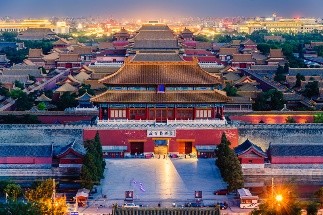Ming Tombs to All Be opened by 2030
All 13 tombs of the Ming Tombs Scenic Area will be opened to the public by 2030, according to the 2024 Ming Dynasty Culture Forum held during the weekend in Changping district in Beijing.
The Ming Tombs, located in the hinterlands of a northern suburb of Beijing, are the mausoleum complex of the Ming Dynasty (1368–1644). Thirteen emperors and their consorts are buried here, starting with the Yongle Emperor (r. 1403–1424). In 2003, the Ming Tombs as a whole were listed as a world heritage site by UNESCO.
 [Photo via Beijing Daily]
[Photo via Beijing Daily]
In the past, for the protection of relics and visitors' safety, only four repaired tombs were open to the public. However, by 2030, all 13 tombs will be opened to the public, aiming to let the public appreciate the richness and unique charm of the Ming Dynasty culture from a broader perspective, according to the plan of the local government.
Alongside the tombs, the designs for a Ming cultural tourism complex and research-based tourism routes of Ming Dynasty historic sites have also been unveiled at the forum, with an exhibition of more than 100 national treasures from the Ming Dynasty.
With the theme of "The Splendid Age of the Colorful Ming," the forum consisted of a main forum, six themed discussions, an international academic symposium, five exhibitions, and four cultural events, attracting more than 600 domestic and international experts to discuss the historical and contemporary significance of the dynasty hundreds of years ago.
Coinciding with the opening of the forum was the start of the "Magnificent Ming Dynasty Treasures—Special Ming Dynasty Cultural Relics Exhibition," allowing visitors to experience the aesthetic spirit and cultural achievements of the dynasty.
More than 100 cultural relics from over 10 institutions were shown at the Ming Tombs Scenic Area, including the gold mesh crown of the Wanli Emperor, the authentic calligraphy of Dong Qichang, and other high-level national treasures.
"By showing these cultural relics, we hope the audience can feel the diversity and richness of Ming Dynasty culture and the unique aesthetics and creativity of that era," said Li Muchan, section chief of the cultural relics department at the Ming Tombs management center at the event.
To enhance the visitor experience, the forum introduced various sections to attract the public, offering more than thirty activities such as traditional Ming ceremonies, fashion shows, and concerts.
Li Boyu contributed to this story.



